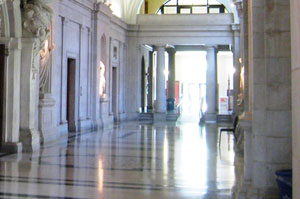 The dystopian scare isn’t over yet. Recent dystopian and apocalyptic themes have been the popular fare – as it conquered both genres of book, shows and films. The same dystopian flavour is creating a vivid picture of university-nightmare – an interesting twist for the first “futures project.”
The dystopian scare isn’t over yet. Recent dystopian and apocalyptic themes have been the popular fare – as it conquered both genres of book, shows and films. The same dystopian flavour is creating a vivid picture of university-nightmare – an interesting twist for the first “futures project.”
The project is a product of collaboration between two major education entities, the student accommodation’s Unite Group and non-partisan organisation, University Alliance. The project, which is entitled, “Living and Learning in 2034: a Higher Education Futures Project,” has been creating profound buzz as it leads its viewers to the different futuristic probabilities awaiting the 2034 students.
Scenario three
The dystopian world of UK’s universities is tagged as the “Digital Islands.” This scenario is an offspring of the matrix-combination of “Stagnating Economy and Competitive Society.” Under this scenario, higher education will exist under a single focus: students’ “training for employment.”
Degrees won’t have to take four or three years to be conferred. Instead, it will become an intensive 18-months-affair. Those who’ve been worrying over the existing gaps between the elite and non-elite students could choke over this: the gap will become more “pronounced.”
Fun is rare
But what would probably cause more groans is the horrendous state of social life. Under the third scenario, improving student experience won’t longer be considered as part of an institution’s mission. Consequently, there is very “little variation in the activities,” networks won’t have to be established, friends are limited, and even “large scale social gatherings are severely limited.”
Students’ best alternative is the extra-curricular activities. But with no luck, all of these activities are tailored towards “immediate benefits” – from “specialist training courses” to “business workshops.”
The culprit
Labelled as the “gloomiest of the scenarios,” the culprit of this dystopian uni life boiled down to one particular aspect: the funding system.
The third scenario is actually the result of a severed cut of government funding, a case which left its students paying for their higher education. Available courses will also become limited – only for those courses requested by the local employers.
Horror-stories
To enable students in envisioning the scenarios, mini-stories were presented in the side. For the third scenario, see here a short excerpt from “The Student” by Cameron Sutherland:
Being a student has changed. Most student bars have gone out of business, social networking sites have essentially become a litany of people’s grades, technology has vastly improved and people are connected to everything except each other.
True to Orwellian fashion, every academic aspect became purely academic. Activities ceased to become a source of enjoyment or leisure; worse, students have no choice but to succumb to the system, making themselves part of the academic cogs.
The aforementioned scenario is, indeed, hauntingly frigid. But the futures project is not solely meant to deliver such chilling prospects. The objective of the project is to improve the futuristic view of higher education and university life:
It does not attempt to predict the future, but by constructing a number of engaging and different stories about possible futures it challenges us to consider what may lie ahead – and how we can respond.
Hence, these scenarios should be carefully considered, its elements craftily weighed. Without such precautions, its audience could only label its contents as a work of fiction, and not a manifestation of a not-so distant future.
Do you believe that this dystopian scenario (and the other scenarios) will create a remarkable impact among its stakeholders – the universities, government, and students?
 English
English 中文
中文
